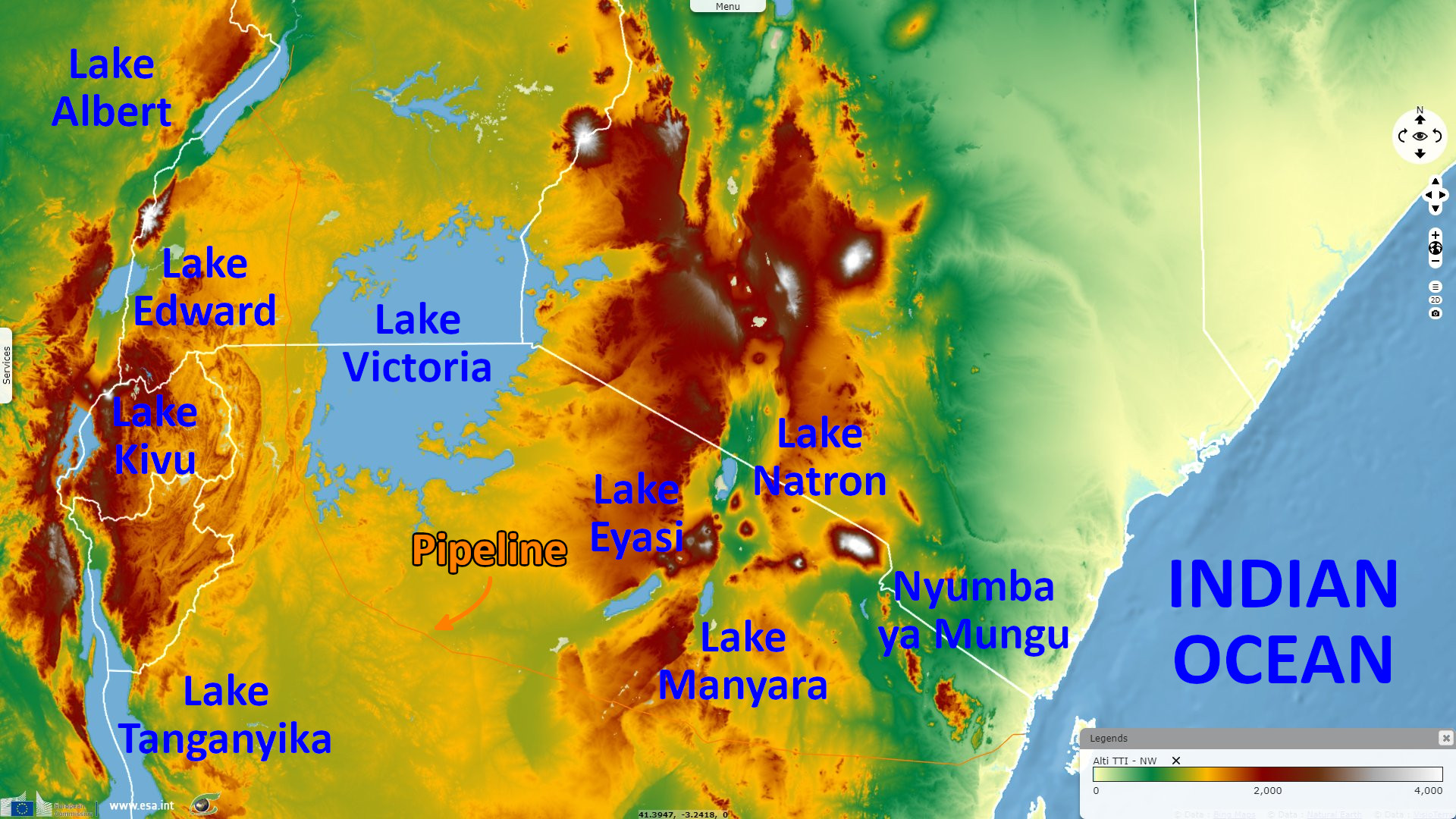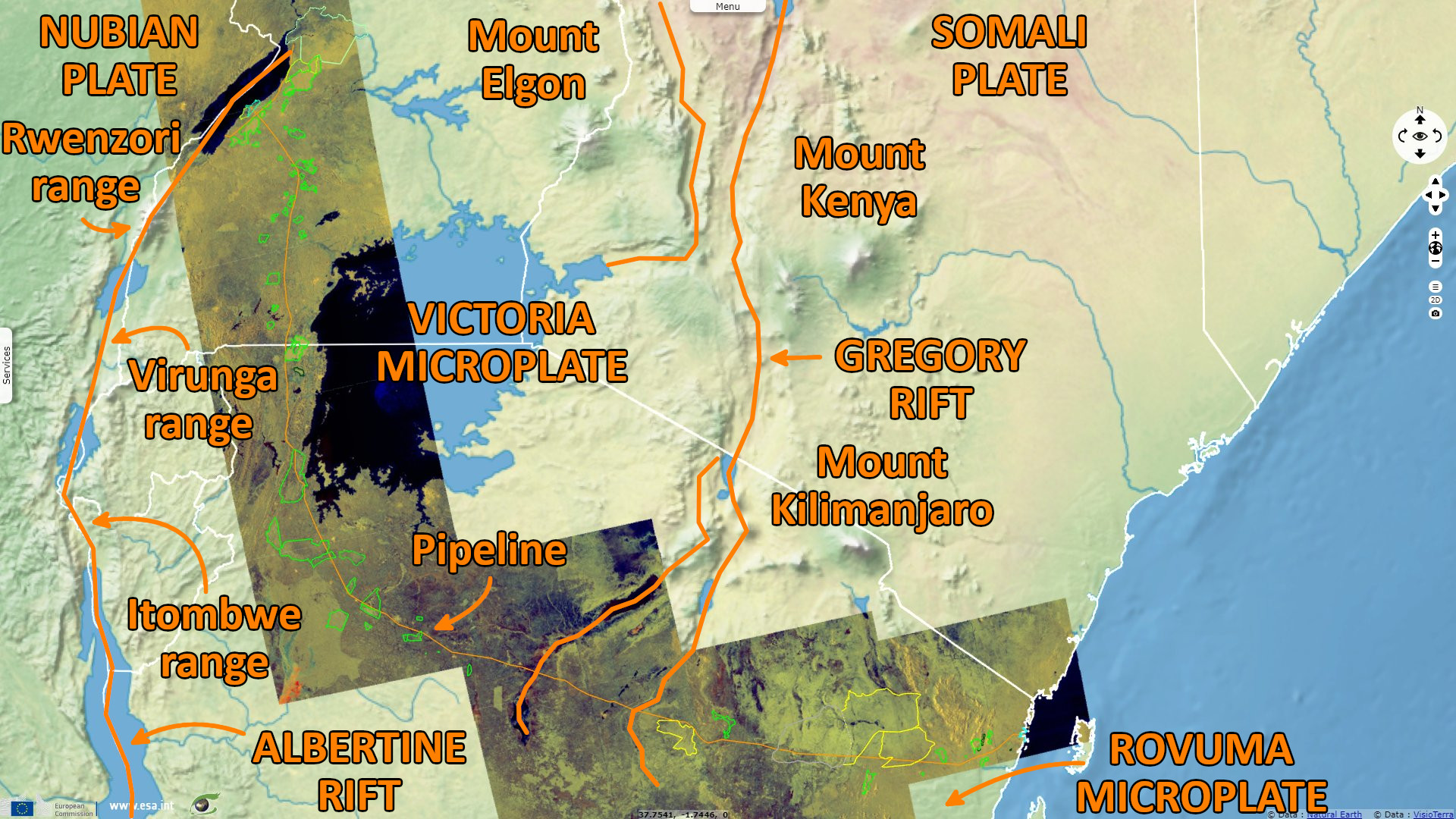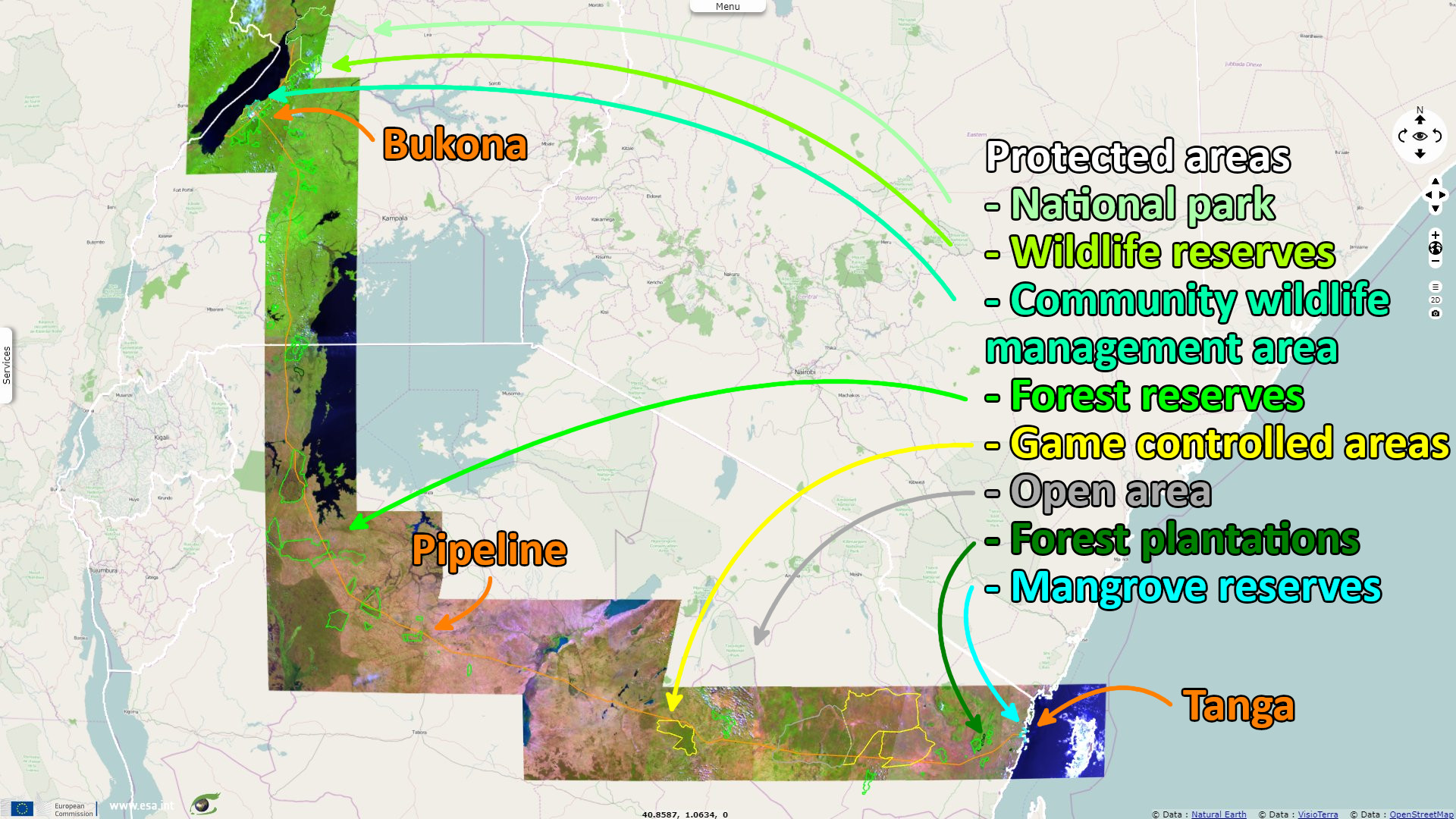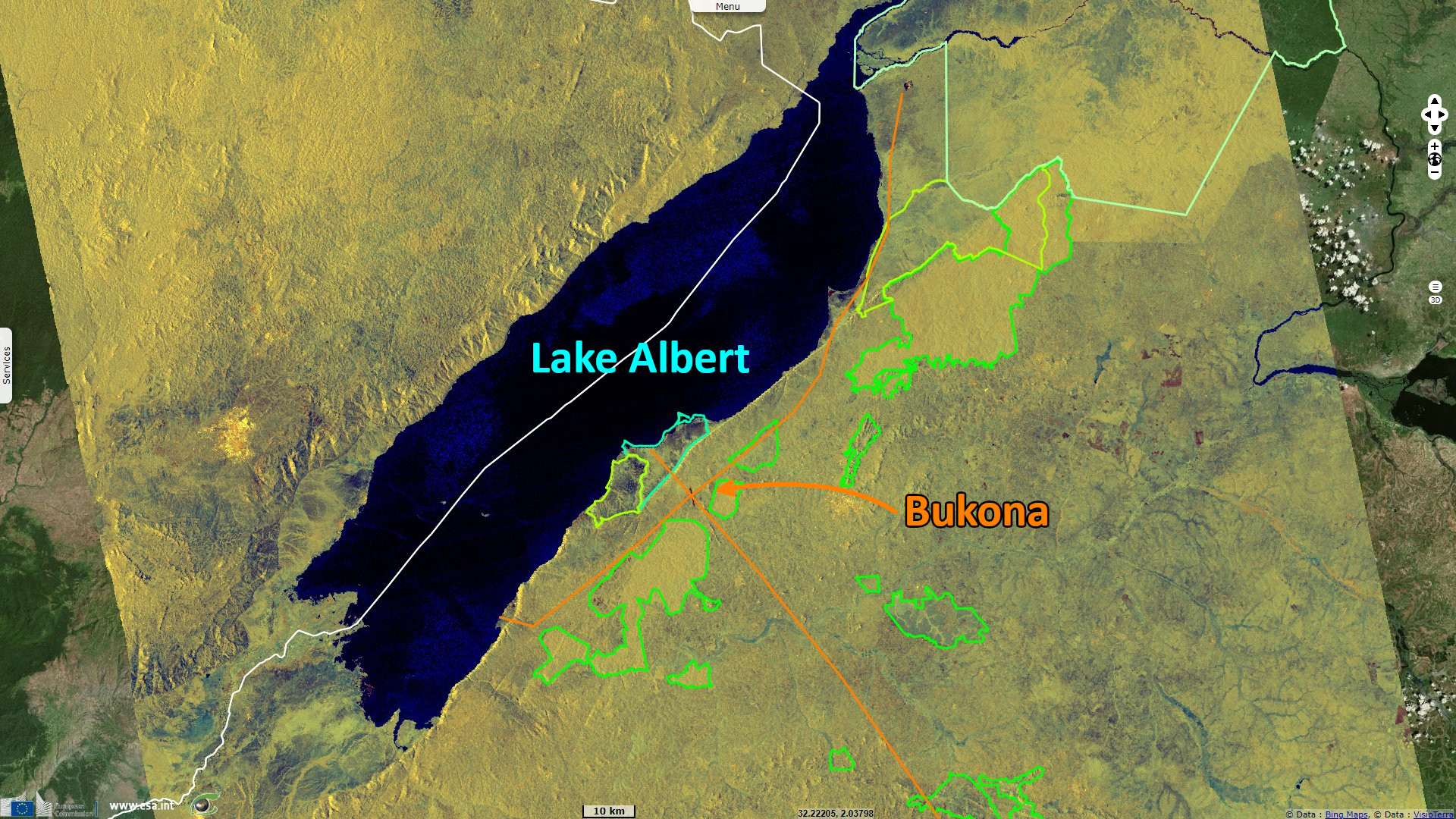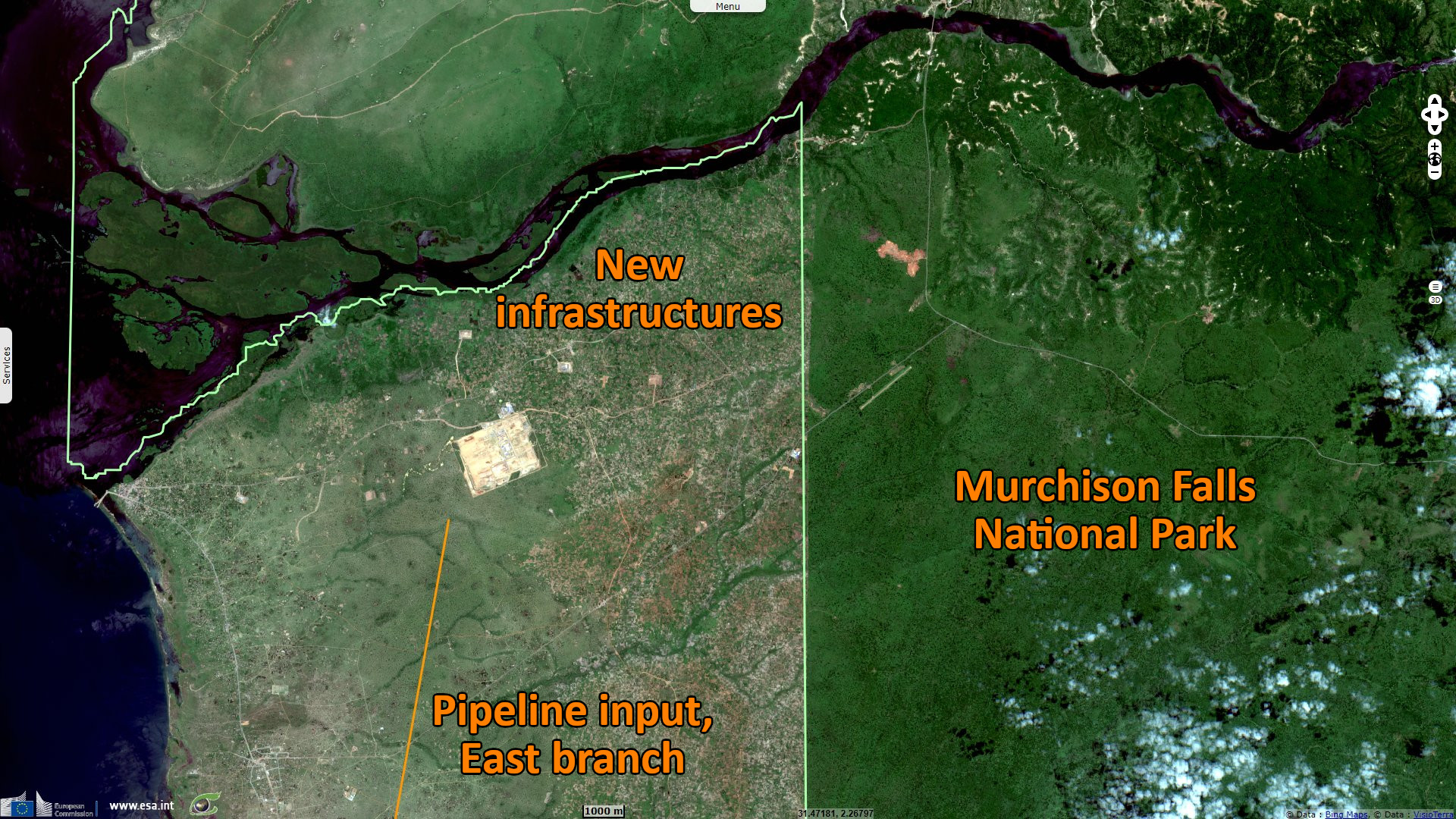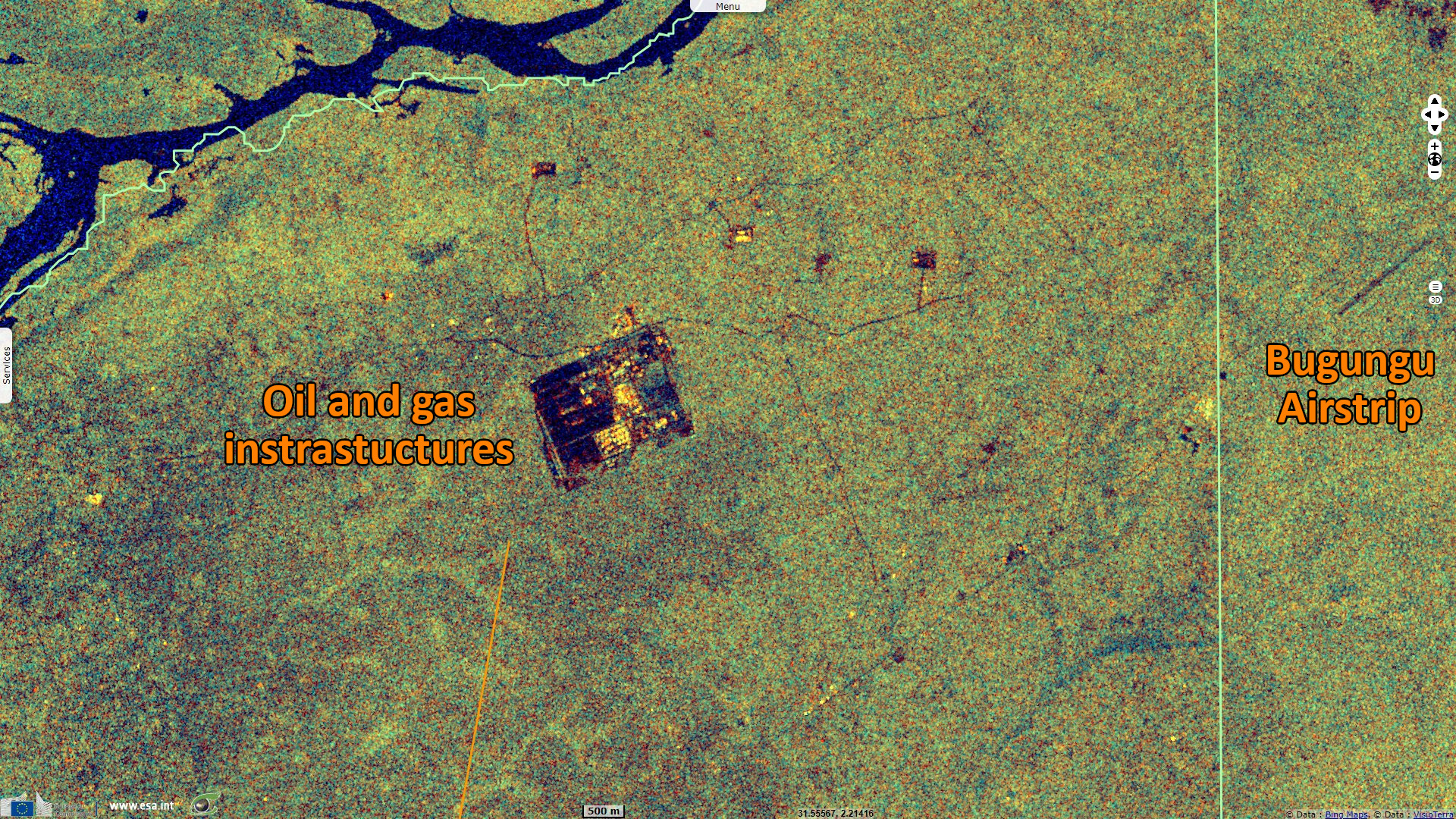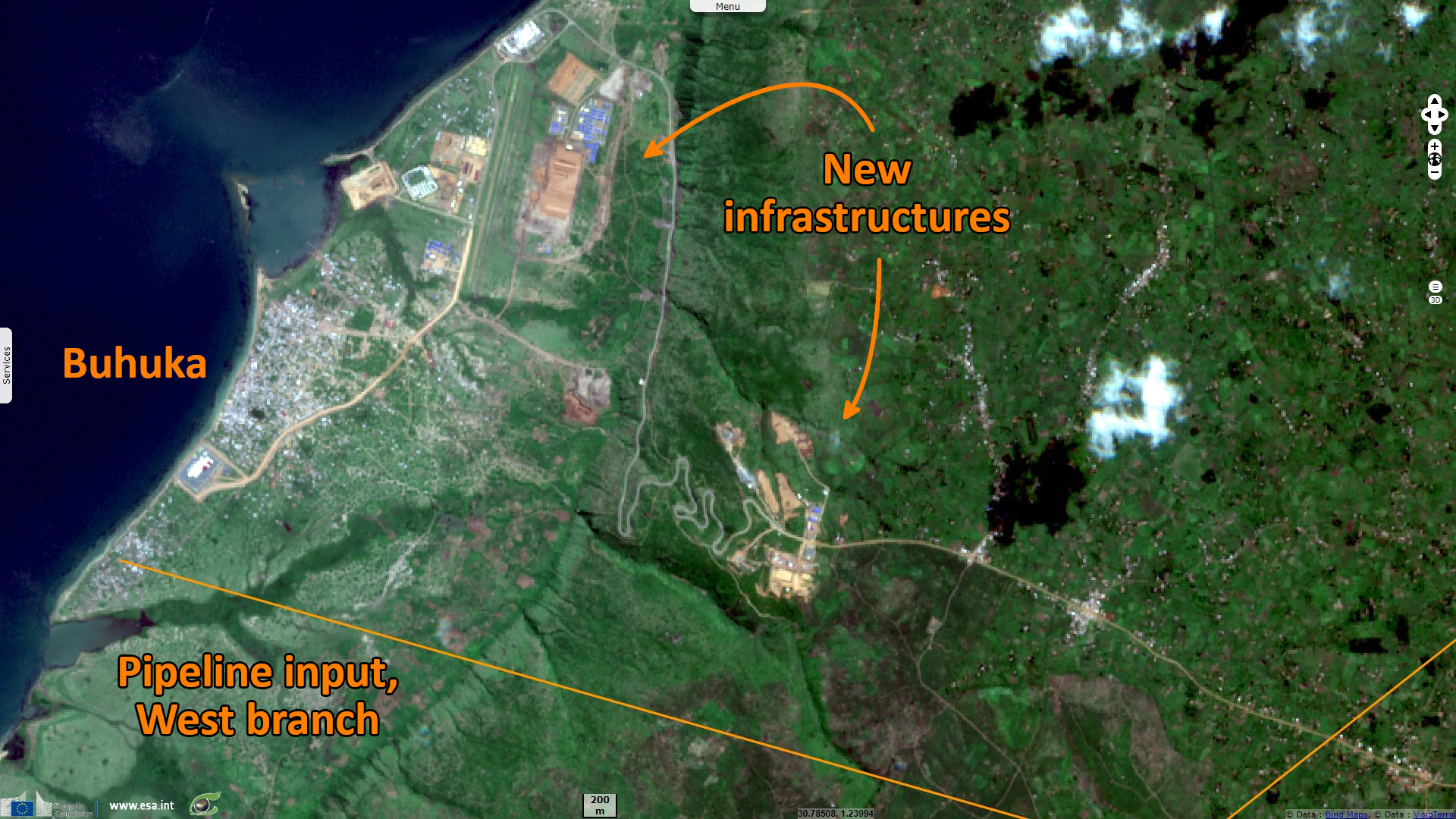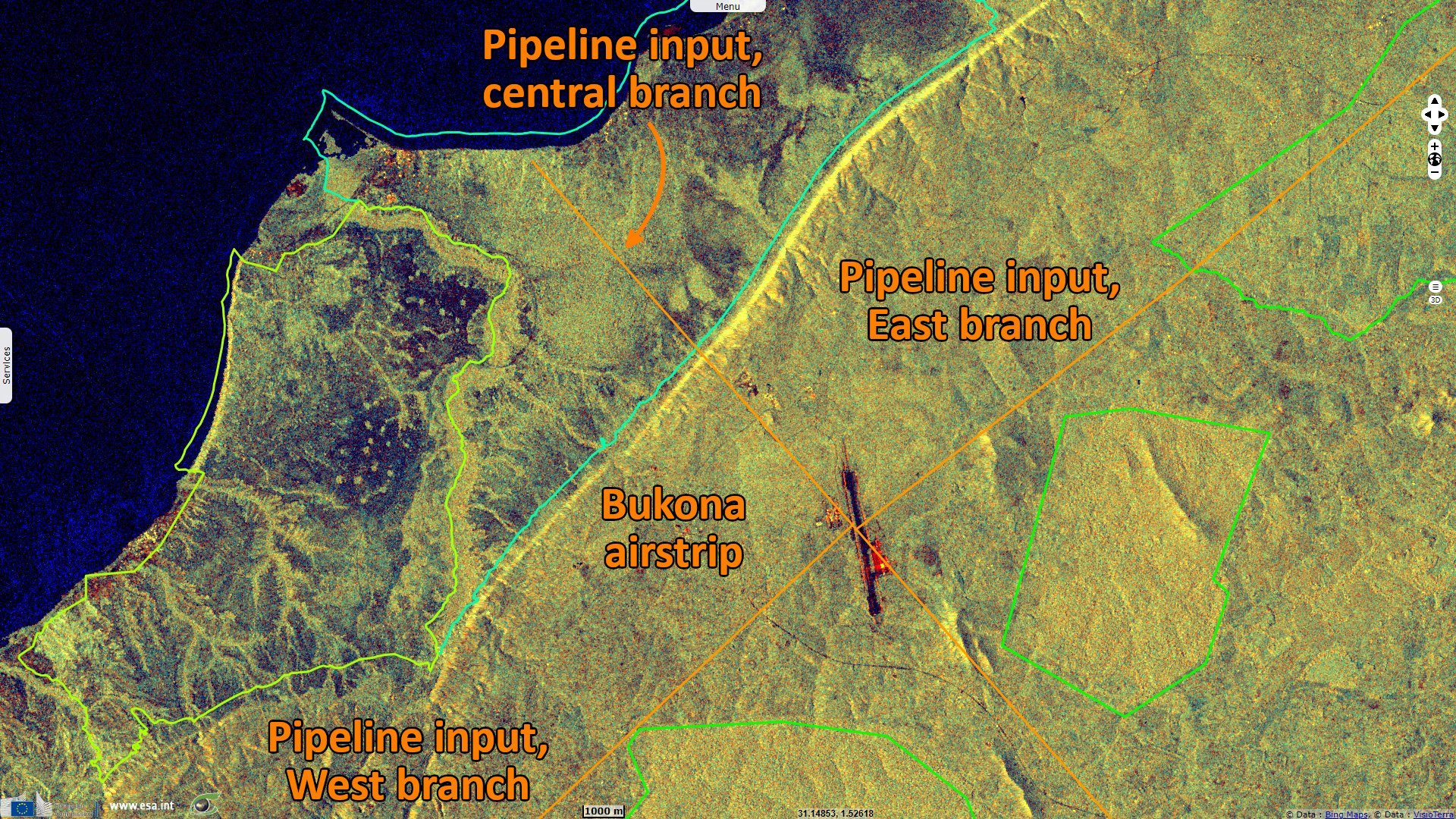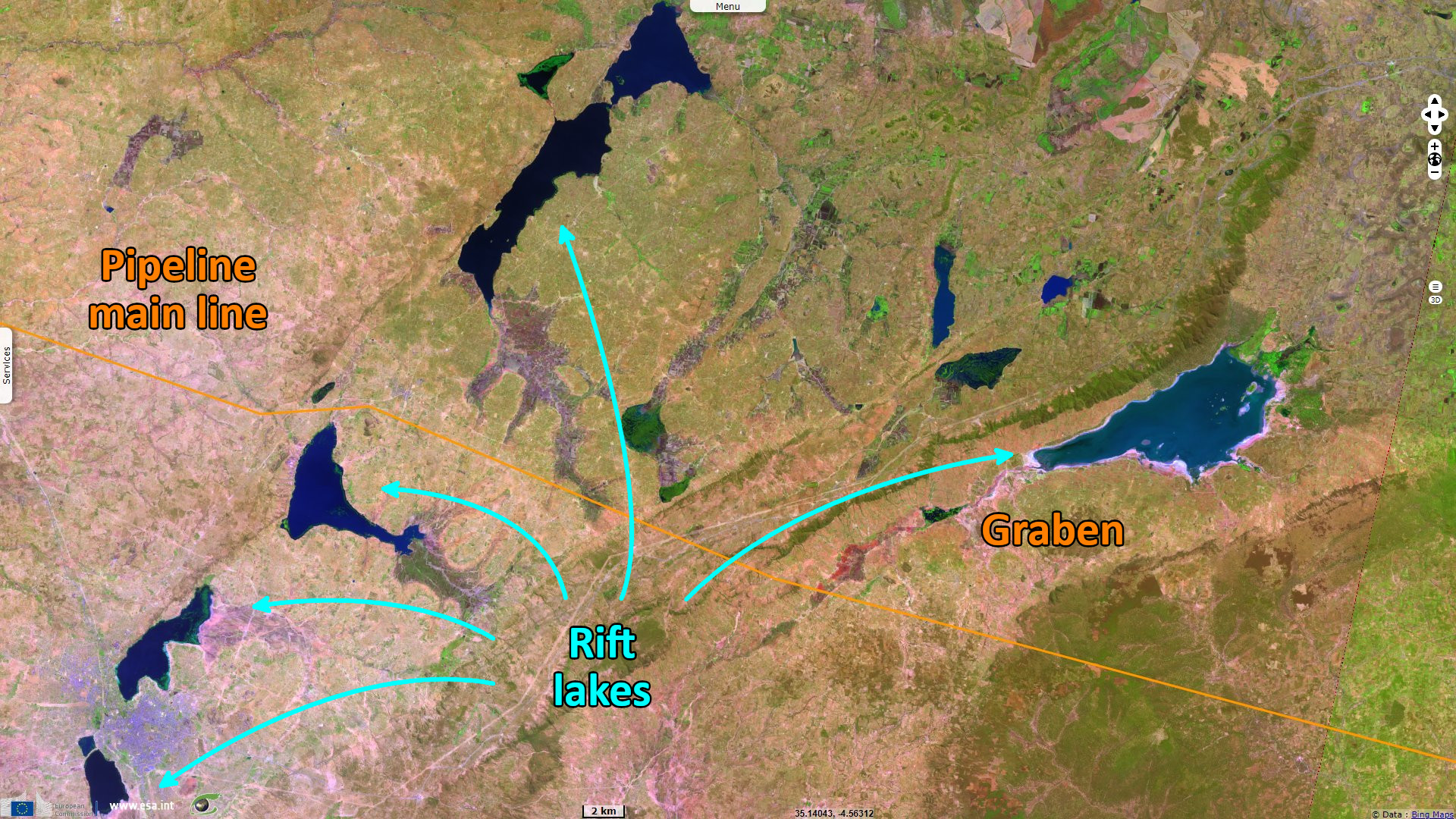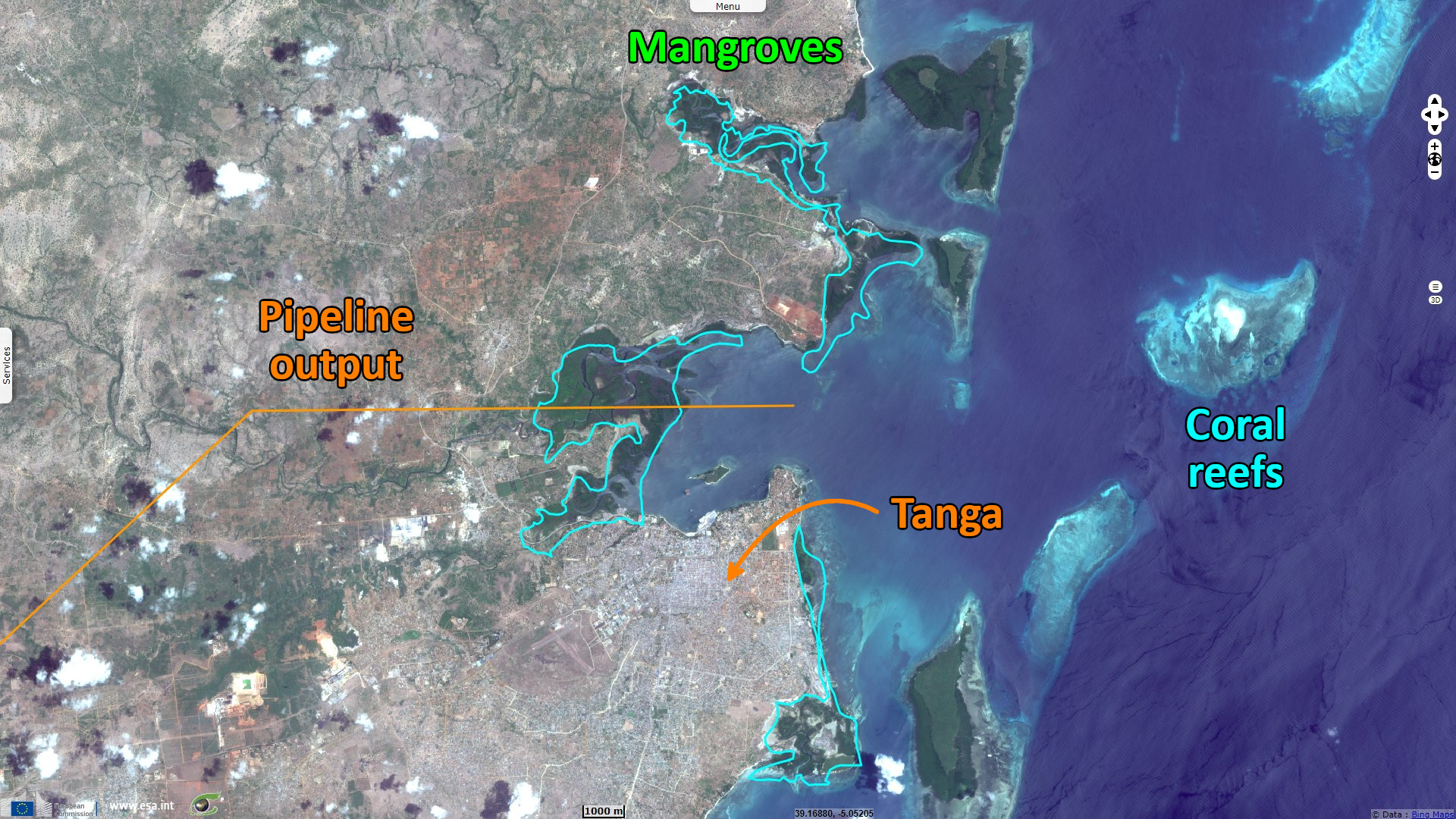The controversial project of East African Crude Oil Pipeline has started, Uganda
Sentinel-3 OLCI FR acquired on 15 February 2023 from 07:18:07 to 07:21:07 UTC
Sentinel-1 CSAR IW acquired on 04 July 2023 from 16:03:42 to 16:04:07 UTC
...
Sentinel-2 MSI acquired on 13 July 2023 at 07:56:11 UTC
Sentinel-1 CSAR IW acquired on 04 July 2023 from 16:03:42 to 16:04:07 UTC
...
Sentinel-2 MSI acquired on 13 July 2023 at 07:56:11 UTC
Keyword(s): Geology, African Rift Valley, oil and gas, climate change, energy, infrastructure, forest preserve, coral reef, mangrove, biodiversity, Tanzania, Ouganda
Christopher Smith reported in Oil and gas journal on 20 January 2023: "Uganda has approved East African Crude Oil Pipeline (EACOP) Co. Ltd.’s application to build the 300 000 barrels-per-day pipeline, with construction expected to start in November 2023. EACOP will be developed jointly by Uganda and Tanzania, with the latter also committing to the project."
"EACOP will carry crude 1445 km from Kabaale, Hoima district, Uganda, to the Port of Tanga, Tanzania, for export to the international market. Ugandan rights-of-way are still being acquired."
"The buried, heated, 61 cm pipeline will cost roughly $4 billion. EACOP Co. Ltd. includes affiliates of upstream partners Total Energies E&P Uganda (62%), Uganda National Oil Co. (UNOC, 15%), and China National Offshore Oil Corp. (CNOOC) Uganda (8%), with the remaining 15% held by Tanzania Petroleum Development Corp. (TPDC)."
"The four companies last year took final investment decision on the Lake Albert development project in Uganda. Lake Albert development includes Tilenga and Kingfisher oil projects and construction of EACOP. Tilenga, operated by TotalEnergies, and Kingfisher, operated by CNOOC, are expected to start producing in 2025 and reach a cumulative plateau production of 230 000 barrels-per-day."
Six months later, Elias Biryabarema wrote for Reuters: "A planned oil pipeline to help Uganda export its crude to international markets has "devastated" the lives of thousands of people who have experienced delayed or inadequate compensation for their land, Human Rights Watch (HRW) said on Monday. The rights group also said the project is a disaster for the planet as it will add emissions that exacerbate climate change."
"France's TotalEnergies rejected HRW's accusations, saying it was respecting all the rights of affected people. Preliminary ground work began earlier this year and the pipeline is scheduled for completion in 2025. Those displaced by the pipeline have received inadequate compensation and multi-year delays in receiving that compensation, HRW said in a statement."
"'EACOP has been a disaster for the tens of thousands who have lost the land that provided food for their families and an income to send their children to school, and who received too little compensation from TotalEnergies.' HRW said it had conducted over 90 interviews earlier this year, including with 75 displaced families in 5 districts in Uganda."
"A TotalEnergies spokesperson told Reuters the firm and its partners are committed to addressing the rights of affected people as well as the environmental and biodiversity impact of the project. 'We are doing everything to ensure it (EACOP) is a model in terms of transparency, shared prosperity, economic and social progress,' the spokesperson said, adding those affected were being relocated to nearby areas and would experience better conditions of living. Nearly all the people affected by the project have been compensated, he said."
"EACOP has already drawn criticism from clean energy advocates and other rights groups who say the project has caused mass displacement and will ruin multiple ecologically sensitive areas along its path in both countries. These organisations have urged lenders around the world not to help fund the project and some banks have vowed not to participate in its financing. The process to acquire land for the project, HRW added, had 'caused severe financial hardships for thousands of Ugandan farmers, including heavy household debt.'", adds Reuters.

